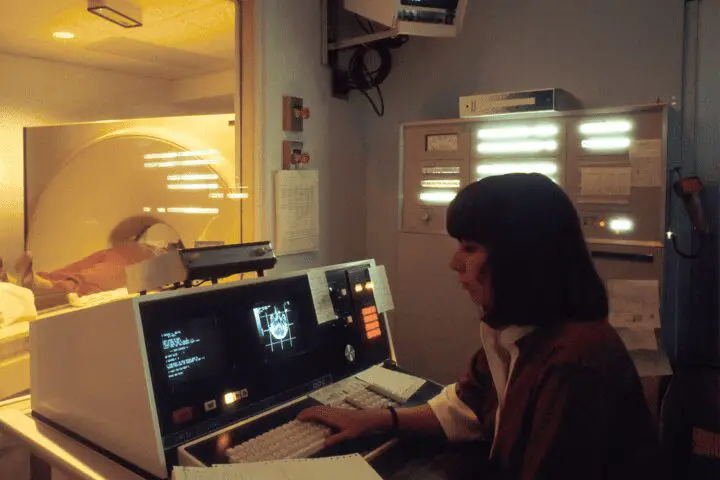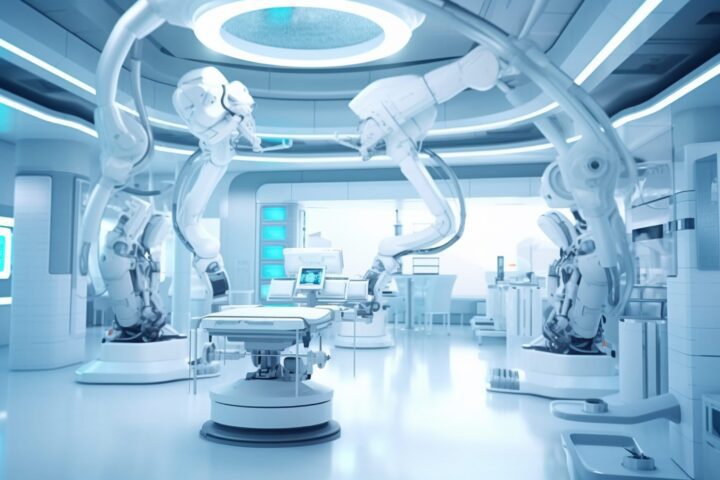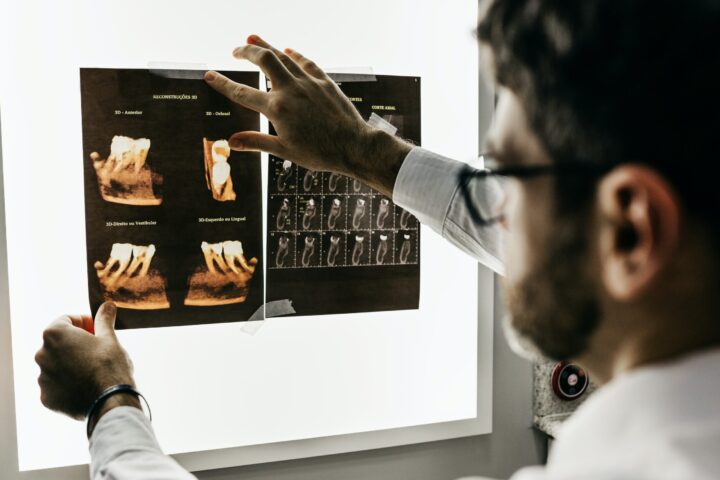It is very important, especially for the assessment, care, and pain management or sedation for various types of surgical or diagnostic processes. Much as treatment is crucial in anesthesiology, it is about patient safety, which utmost regards since slight over-sights may make the great difference. Artificial intelligence plays a large role in slowly making sure the patient remains safe under the effects of the anesthesia. In turn, AI will help anesthesiologists make better decisions, improve monitoring, and reduce risks throughout the entire surgery.
This article now analyzes how AI can change anesthesia, focusing on increasing patient safety by underlining some of the key discussions with regard to applications that AI is expected to introduce, the impact brought about by the use of AI, and the overall promising perspectives that we may gain in the forthcoming decades.
Anaesthesia and Patient Safety
Anaesthesiology is the study of the administration of medicines that render unconsciousness, numbness, or sedation depending on the nature of the procedure. Anaesthesiologists study:
- Monitoring of Vital Signs: “Anesthesiologists would monitor the heart rate, blood pressure, oxygen level, and all other vital signs of a patient in good condition during an operation.” Administration of Anaesthesia: Considering age, weight, case history, and the type of procedure, they will fix on the dosage.
- Pain Management: He needs to keep the patient comfortable—not in pain—either during or after the surgery.
Complication management would tackle adversities related to an adverse drug reaction because of anesthesia or a sudden change in the condition of the patient. Being very sensitive and an intricate task, the decisions made by the anesthesiologist need to be correct and immediate. AI can extend such real-time support by way of improved monitoring, better decision-making, and automation of various processes.


How AI Is Improving the Safety of Anaesthesia
From drug dosage levels to the outcome predictor of a patient, the application of artificial intelligence varies in anesthesia. The main ways that enhance patient safety in anesthesia are as follows:
1. Optimization of drug dosage
Some major duties performed in anesthesiology include dosage calculation to be given to a patient since a little too could wake up the patient in the operation theater and too much may cause serious side effects, even death. Artificial intelligence systems do give out information on the patients and also go ahead to prescribe a certain dose of a particular type of drug.
AI plans the dosage of medicines depending on age, weight, pre-existing diseases, and previous medicinal history, among other personalized factors. This helps in avoiding further complications related to wrong dosing.
Real-Time Adjustments: The real-time response of the patient against anesthesia being administered is tracked through an AI-powered system and continuously adjusts dosages to maintain optimum levels of sedation during the procedure.
2. Monitoring and Early Warning Systems
One of the most important activities going on during surgery is continuous monitoring of the patient’s vital signs. Early signs of any complication will be traced with good efficiency by the AI-powered monitoring systems.
- Vital Signs Monitoring: The AI algorithms continuously analyze the vitals for any deviation from normal ranges. Sudden surges or sudden dips in heart rate, oxygen saturation, and blood pressure trigger instant alert signals to the anesthesiologist.
- Complication Prediction: AI now moves on to predict complications that can arise, depending upon the history and trends of the present. It could identify which patient will develop respiratory issues or allergic reactions due to anesthesia post-surgery.
- Minimizing Human Errors: Since most of the monitoring tasks are automated using AI, human errors would be greatly lessened. With this, more time would be available to anesthesiologists to invest in critical decisions. In that case, patients are better managed.
3. AI-Guided Decision Support
Decision-making during anesthesia many times has to be within split seconds and requires very fine-tuned judgment. AI-powered decision support tools can really help the anesthesiologists arrive at better decisions.
- CDSS: AI-driven CDSS provides real-time recommendations regarding patient data and medical guidelines. It helps the anesthesiologist in deciding on the best course of action for complicated cases with the highest standard of patient safety and quality.
- Predicting Outcomes: AI algorithms can predict the outcomes for patients based on history about the patients and their current state. In this way, it helps the anesthesiologists to take necessary precautions and avoid complications whenever possible.
4. Smoothening in post-operative care
Actually, patient safety does not end with the operating theater. As a matter of fact, the postoperative phase of care is rather important in terms of areas of recovery and smooth passage regarding pain management and complications. AI optimizes postoperative care.
- Pain Management: AI systems make recommendations on pain management in a particular patient by analyzing patient data. Thus, pain medication is personalized, and AI reduces the occurrence of either undermedication or overmedication.
- Identification of High-Risk Patients: AI will help in pinpointing those patients who have a high risk for postoperative complications such as infection, respiratory problems, and longer hospitalization. This will enable the medical team to take early interventions to reduce the possibility of adverse outcomes.
5. Surgical Robotics Improvement
AI also finds its place in robotic-assisted surgeries, where precision plays an important role. Such systems cooperate with anesthesiologists to improve the patient safety of patients during complicated procedures.
- AI-Governed Robotics: AI in robot-assisted surgery provides accuracy in the manipulation of surgical instruments. This level of accuracy allows for minimal damage to tissues and reduces risk to the patient altogether.
- Collaborative AI Systems: AI-run robotic systems can provide, in real time, information about the current status of patients to anesthesiologists who are on the operation theater floor in the course of a surgical operation, thus further allowing for much more coordinated care.


Case Studies: AI in Anaesthesiology in Action
To contextualize how it works in anesthesiology, let’s just go through a few case studies of the same:
1. AI-Based Anaesthesia Management
In this regard, SedanaAI or similar artificial intelligence systems in various leading hospitals are already helping the anesthesiologists maintain their balance during surgery. This works via constant monitoring of vital signs, which can generate stability in operations by regulating anesthesia.
2. Prediction of Postoperative Complications
A US hospital put the AI platform to work in order to analyze patients’ data, which developed post-operational complications, including that of a respiratory complication. The output it did return in minutes by showing high-risk patients, for which medical practitioners may intervene with enforcing proper medicinal intervention, hence letting them evade such instances.
3. Pain management by AI
For instance, the AI algorithms, after processing information relating to patients in a pain management clinic, developed specific pain management schemes. Because of this, patients had their pain managed and side effects minimized and satisfying to the patients.


The Future of AI in Anaesthesiology
Still in the future, AI will have affected changes even in the field of anesthesiology. That which is expected to be witnessed in the future includes, but is not limited to:
1. AI-Driven Autonomous Anaesthesia Systems
In the near future, this may mean partial or fully autonomous anesthesia conducted solely by the system itself without human intervention. It embeds AI into its system to monitor constantly for the level of sedation and bring about on-the-spot changes in the treatment. While reducing anesthesiologist demand in some settings, it will certainly pose concerns with safety questions and hence call for close scrutiny.
2. Advanced Predictive Analytics
AI will further enhance the capability to predict the patient’s outcome in respect of complications. A lot of data will enable the predictive model to come out with much precision and, therefore, enable the anesthesiologist to take appropriate action so that the complication in the first instance does not come up.
3. Integration with Wearable Devices
This will include wearables that continuously track the patient’s vital signs before and after surgery, serving to continuously feed the AI more data in return for better postoperative monitoring, thus enhancing early complication detection.
In conclusion, AI has also begun to bring change to the face of anesthesiology—from improvements in patient safety through better monitoring and decision support to offering personalized care, optimization of drug dosages, and the prediction of complications. It is helping the anesthesiologists deliver safer, more effective care.
As AI technology continues to evolve, so will its role in anesthesia. Where it could go is independence for anesthesia systems in the future, advanced predictive analytics, and wearables in patient care. It would contribute much to accomplishing one of the core goals: assuring the best quality for the patient during surgery or any other medical procedures.



































I like the efforts you have put in this, regards for all the great content.
Thank you
Fantastic site A lot of helpful info here Im sending it to some buddies ans additionally sharing in delicious And naturally thanks on your sweat
Just wish to say your article is as astonishing. The clearness in your submit is just nice and i could think you’re knowledgeable in this subject. Well together with your permission allow me to grab your RSS feed to keep updated with imminent post. Thanks a million and please keep up the rewarding work.